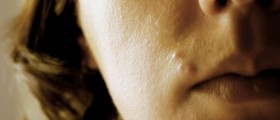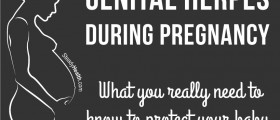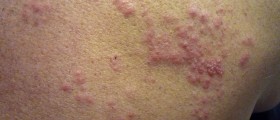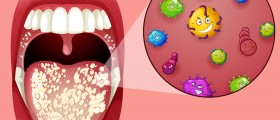
Fever blisters and canker sores are commonly reported in people of all ages. They form inside the oral cavity or around the mouth and are a source of pain and discomfort. These lesions may be misinterpreted as each other because they are quite similar in appearance. Still, there is difference when it comes to their distribution. Canker sores develop only inside the mouth, generally on the tongue and inside the cheeks, lips and throat while fever blisters affect the gums and the roof of the mouth.
More about Fever Blisters
Herpes simplex virus type 1 is the infectious agent responsible for the onset of fever blisters. The other type of the virus (type 2) can also infect oral tissues but recurrence is reported only in case of infection caused by Herpes simplex virus type 1.
In the majority of cases the virus is spread by kissing. Even though initial infection can be asymptomatic, there are also patients who complain about numerous fluid-filled blisters, fever, swollen neck glands and general aches. Blisters heal without scarring within 2 weeks.
Recurrent infection affects the edge of the lip or the nostril, although it may also occur on the cheeks, chin and inside the oral cavity.
Recurrent fever blisters are triggered by emotional stress, fever, injury, some infections and in women fever blisters basically occur during menstruation. Exposure to sunlight is another trigger factor for recurrent infection.
As for treatment, doctors usually prescribe numbing agents to reduce the pain associated with severe blistering, antibiotics which prevent secondary bacterial infection and may opt for ointments that reduce viral multiplications and prevent further blisters from developing.
More about Canker Sores
Canker sores or aphthous stomatitis is a recurrent medical condition characterized by sores that form on the movable parts of the mouth (e.g. the tongue and the inside lining of lips and cheeks). Initially, canker sores are reddish and small, round lumps. They burst within a day and then get covered with white/yellow membrane and are eventually surrounded by a red halo. Canker sores tend to heal within 2 weeks and may cause scarring.
Canker sores are not associated with any bacterial or fungal infection. They may develop as a consequence of allergy to a type of bacterium found in the oral cavity or allergy to some foods. Furthermore, many experts believe that canker sores occur due to a faulty immune system and the condition is also associated with nutritional deficiencies (e.g. lack of B12 vitamin, folic acid and iron). In women canker sores similarly to fever blisters may occur during menstruation. And finally, emotional stress and injuries may contribute to the onset of this rather painful and unpleasant medical condition.
There is no actual cure for canker sores, but their healing may be accelerated by vitamins and other nutritional supplements. These can also prevent their recurrence. Patients in whom canker sores develop due to some kind of food allergy are supposed to eliminate such food form their diet.
- medlineplus.gov/ency/article/000998.htm
- medlineplus.gov/ency/article/001383.htm
- Photo courtesy of Toshiyuki IMAI by Flickr: www.flickr.com/photos/12173213@N00/2422273581/

















Your thoughts on this
Loading...